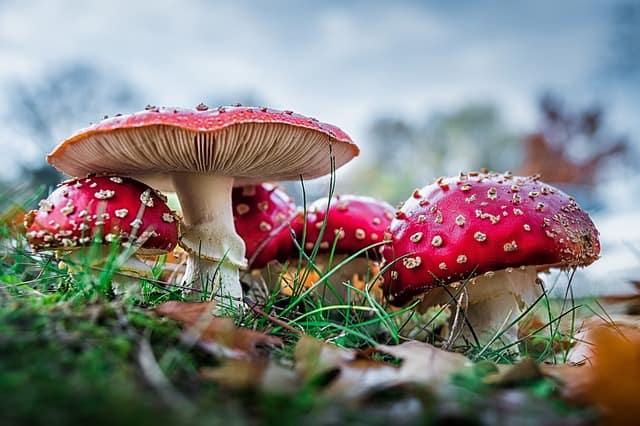
Mushroom poisoning in pets is not very common but still a threat, according to some experts, even though it ranks near the top of the pet poisoning list every year.
Mushrooms present a special problem for pet parents, because unless you are a mushroom expert, it’s nearly impossible to tell the difference between toxic and non-toxic varieties.
Separating toxic mushrooms from non-toxic ones is really a feat for those unfamiliar with them, an apparently “innocent” mushroom could lead to death if ingested by your pet
There are several thousand species of fungi, but few are considered toxic. Most of the deadly poisonings in domestic animals involve mushrooms of the genera Amanita.
The amanita mushroom, for example, is found in Europe, Asia and North America. It has as many as seven varieties of colors and shapes, which increases the difficulty of identifying it correctly and potentially deadly if ingested.
Symptoms of mushroom poisoning
The clinical signs of mushroom poisoning depend on the species of mushroom ingested, the specific toxin the mushroom contains and the susceptibility of the individual animal.in general, mushroom poisoning has distinct clinical syndromes:
Gastrointestinal irritation, vomiting and diarrhea may occur within 24 hours of ingestion.
Muscarinic effects, consisting of copious production of saliva and tears but the most serious sign is a noticeably slowed heartbeat. This syndrome usually occurs within six hours of mushroom ingestion and almost always requires veterinary care.
gastrointestinal disorders, muscarinic effects, the symptoms could be: depression and lethargy, severe abdominal pain and vomiting. There may also be jaundice, bleeding disorders and seizures due to liver damage.
These symptoms occur between 6 and 20 hours after ingestion of the mushrooms and, without promt and aggressive treatment, are often fatal.
Treatment for mushroom poisoning
Treatment for mushroom poisoning depends on the symptoms and focuses on stabilizing your pet.
Decontamination includes inducing vomiting to remove any residue of the fungus from the stomach. The next step is usually the administration of activated charcoal to absorb the remaining toxins.
If your pet continues to show signs of toxicity, it is probably still unclear what toxin he ingested take them to the vet and stay there until your pet is out of harm’s way.
Prevent mushroom poisoning in your pet
Mushrooms in your own or neighbors’ gardens should be removed promptly before neighborhood pets have a chance to notice them.
As a general rule, veterinarians and pet poison experts consider all ingestion of fungus in pets to be toxic unless quick and accurate identification of the fungus can be made.
If you know or suspect that your pet has eaten a mushroom, contact your veterinarian immediately.






